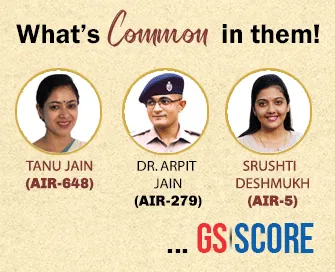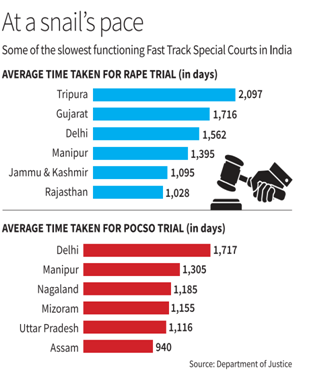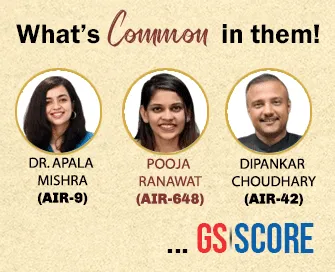

11th August 2025 (12 Topics)
Mains Issues
Context:
A judicial commission has submitted its report highlighting alleged irregularities and structural faults in a large multi-purpose irrigation project in Telangana, prompting legislative discussion on its future.
Overview of the Project
- Nature – Multi-stage lift irrigation scheme on the Godavari river.
- Purpose – Designed to provide irrigation to over 16 lakh acres in 13 districts, stabilise existing ayacut, and supply drinking and industrial water.
- Storage & Allocation – Planned storage of 240 TMC ft, with allocations for irrigation (169 TMC ft), drinking water for urban and rural needs (40 TMC ft), and industrial uses (16 TMC ft).
- Scale – Canal network exceeding 1,800 km.
Execution and Cost
- Initial Cost Estimate – ?71,000 crore.
- Cost Escalation – Rose to over ?1 lakh crore, with further expenditure expected for finishing works.
- Infrastructure – Construction of multiple barrages for water storage and regulation.
Points of Controversy
- Change in Project Location – Shift from an earlier cleared site despite water availability as per official assessments.
- Foundation Concerns – Allegations of building on permeable foundations unable to withstand high water inflows.
- Utilisation of Earlier Works – Abandonment of partially completed works from a previous irrigation scheme at the earlier site.
- Decision-Making Process – Allegations of unilateral decision-making without formal cabinet sanction.
Structural and Technical Failures
- Barrage Damage – Sinking of piers and development of cracks in multiple barrages within a few years of commissioning.
- Ignoring Technical Advice – Storing large volumes of water contrary to engineering recommendations.
Judicial Inquiry
- Commission Formation – Headed by a former Supreme Court judge to investigate irregularities.
- Process – Examination of over 110 witnesses, including political and administrative figures involved in project decision-making and fund release.
- Findings – Submitted to the State government for legislative debate.
Political Responses
- Government Stance – Plans to hold detailed legislative discussion, inform the public, and decide the future course with inputs from all political parties.
- Opposition Defence – Claims of statutory approvals from central agencies and ratification by the legislative assembly.
Way Forward:
- Technical Audit – Independent engineering evaluation of all structures to assess safety and repair needs.
- Financial Scrutiny – Detailed public audit of expenditure and cost escalations.
- Transparent Decision-Making – Mandatory cabinet and legislative approvals for large infrastructure projects.
- Hydrological and Environmental Compliance – Strict adherence to expert recommendations before altering project sites.
- Accountability Mechanisms – Clear responsibility fixation on contractors, engineers, and officials for lapses.


Mains Issues
Context:
Data presented in the Lok Sabha reveals that Fast Track Special Courts (FTSCs) in Delhi, established to expedite trials in rape and child sexual abuse cases, are facing significant delays in case disposal.
Fast Track Special Courts – Performance and Challenges in Delivering Swift Justice
Genesis of FTSCs
- Legislative Basis – Established following the Criminal Law (Amendment) Act, 2018, which introduced stricter provisions for crimes against women and children.
- Judicial Direction – In July 2019, the Supreme Court mandated exclusive special courts in districts with more than 100 pending POCSO cases.
- Government Initiative – FTSC scheme launched in August 2019, with each court mandated to dispose of at least 165 cases annually.
Present Status
- Nationwide Figures – As of June 30, 2025, there are 725 FTSCs in 30 States/UTs, including 392 exclusive POCSO courts.
- Delhi’s Position – 16 FTSCs (11 exclusive POCSO courts), with 6,278 cases instituted since inception; only 2,718 disposed.
- Performance Gap – Case disposal rate significantly below target, indicating structural and procedural bottlenecks.

Impact on Survivors
- Judicial Observations – Delays prolong trauma for survivors, worsening their psychological suffering (Justice SwaranaKanta Sharma, March 2024 ruling).
- Advocacy Viewpoint – Lawyers argue cases could conclude within two months due to limited witnesses if seriousness is ensured.
- Criticism of Model – Some legal experts term FTSCs a “political gimmick,” pointing to systemic backlog and diversion of resources from other cases.
Way Forward:
- Judicial Manpower Augmentation – Appointment of dedicated judges for FTSCs to meet disposal targets.
- Strict Procedural Timelines – Mandatory daily hearings and restrictions on adjournments.
- Victim & Witness Support – Dedicated counselling, protection, and logistical assistance to encourage participation.
- Technology Adoption – Use of virtual hearings and electronic evidence handling for quicker trials.
- Data-Driven Monitoring – Regular performance audits of FTSCs with public disclosure.


Mains Issues
Context:
India faces multi-hazard vulnerability, with over 58% of landmass prone to earthquakes, 68% of cultivable land to drought, and increasing instances of flooding, cloud bursts, cyclones. NDMA’s DMExGuidelines mandate regular simulation-based exercises to test disaster plans, coordination, and readiness.
Legal & Policy Framework
- Disaster Management Act, 2005 – Creates legal and institutional structures for disaster prevention, preparedness, mitigation, and response.
- Establishes NDMA, SDMAs, DDMAs, and specialized agencies like NDRF.
- Mandates disaster plans, funds, emergency powers, relief standards, and integration of disaster risk reduction (DRR) into development.
- National Policy on Disaster Management, 2009 – Shifted focus from relief to preparedness and resilience.
- National Disaster Management Plan, 2019 – Actionable blueprint for DRR, aligned with Sendai Framework.
Vulnerability of India
- 58% landmass prone to earthquakes, 68% cultivable land to drought, 12% to floods, and 5,700 km coastline to cyclones/tsunamis.
- Large urban areas vulnerable to floods, fires, industrial and CBRN accidents.
- 27 out of 36 states/UTs are disaster-prone.
Key Institutions
- NDMA – Apex body under PM; policy, coordination, guidelines, capacity building.
- NDRF – Specialized force for search, rescue, relief; trained for natural disasters & CBRN emergencies; proactive deployment; capacity building; 16 battalions.
- Local bodies, NGOs, communities – Critical in awareness, drills, and on-ground coordination.
Disaster Management Exercises (DMEx)
- Structured simulation-based exercises to test disaster plans, coordination, and readiness.
- NDMA’s DMEx Guidelines:
- For authorities – Regular multi-level drills, align with DM plans, integrate findings.
- For first responders – Action-based exercises, coordination with EOCs, IRS structure.
- For ULBs & PRIs – Facilitate community participation, align local plans.
- For NGOs & volunteers – Mobilize people, assist in simulations, feedback.
- For community – Participate, learn response protocols, give suggestions.
- For media – Disseminate accurate info, promote preparedness.
International Framework:
- Sendai Framework (2015–2030) – UN agreement for disaster risk reduction; state-led with multi-stakeholder participation.
Key Recent Drills (2025)
- Uttar Pradesh Flood Mock Exercise (June 24 & 26, 2025) – All 118 tehsils of 44 flood-prone districts; tested flood response.
- Amarnath Yatra Mock Drill (June 28, 2025) – Southern route (Pahalgam Axis), tested stakeholder preparedness for safe pilgrimage.
- Exercise Suraksha Chakra (Aug 1, 2025) – First integrated multi-state earthquake drill in Delhi-NCR (55 locations, 18 districts); involved NDMA, Army, SDMAs; activities included sirens, evacuation, medical simulations, SOP testing.


Mains Issues
Context:
Official statistics indicate that Maoist insurgency, once widespread across the Red Corridor, is now confined to only 18 districts due to targeted development, sustained counterinsurgency operations, and internal organisational weaknesses.
Left-Wing Extremism
- Left-Wing Extremism (LWE), commonly referred to as Naxalism, is an armed insurgency movement led by CPI (Maoist) and allied groups advocating Maoist ideology to overthrow the democratic state through armed struggle.
Geographical Spread:
- At its peak (late 2000s), the "Red Corridor" covered ~180 districts across multiple states including Chhattisgarh, Jharkhand, Odisha, Bihar, Andhra Pradesh, Maharashtra, and parts of West Bengal.
- Present spread is limited to 18 districts (as per Ministry of Home Affairs data).
Statistical Trends:
- Incidents of LWE violence dropped by over 50% between 2004–14 and 2014–23.
- Fatalities reduced by nearly 70% in the same period.
- Peak violence in 2010: 1,936 incidents and 1,005 deaths.
- In 2024: 374 incidents and 150 deaths.
Causes of Decline:
- Security Operations: Coordinated campaigns like Operation Green Hunt and strengthening of security infrastructure in affected areas.
- Development Initiatives: Road construction, mobile connectivity, health and education facilities in remote tribal areas under schemes like Special Central Assistance to LWE-affected districts.
- Internal Weaknesses: Leadership crisis post-resignation of Ganapathy in 2018; death of Basava Raju in 2025; political isolation; ideological rigidity.
- Changing Public Attitudes: Younger tribal and peasant communities seeking education, jobs, and integration into mainstream society.
- Surrenders: Encouragement through surrender and rehabilitation policies in states like Chhattisgarh, Jharkhand, and Andhra Pradesh.


Mains Issues
Context:
Tata Consultancy Services has announced a freeze on experienced hires and workforce reduction, signalling AI-driven restructuring in India’s IT services industry.
Background of Indian IT Industry:
- Generates $280 billion in annual revenue and employs over 5.8 million people.
- Historically driven by large-scale manpower deployment for software development, maintenance, and outsourcing services.
Role of Artificial Intelligence in Transformation:
- AI tools in coding, testing, debugging, and maintenance can boost productivity by over 30%.
- AI testing reduces human error and improves accuracy through data-driven insights.
- AI infrastructure investment projected to exceed $1 trillion globally in 2025.
- Shift from large teams to lean, high-skilled AI-native teams.
Job Impact:
- Routine, repetitive tasks increasingly automated.
- AI not replacing critical skill areas such as C++ programming (OS, gaming, graphics, secure applications), product management, robotics, embedded systems, UI/UX, and DevOps in the immediate future.
- Increased demand for talent with strong mathematics, critical thinking, and imagination.
Opportunities for Indian IT Firms:
- Assist global clients in data cleaning, system modernisation, and AI regulation compliance (e.g., EU AI Act).
- Potential to reposition as global AI adoption enablers rather than being displaced by AI.
Regulatory and Strategic Aspects:
- Compliance with global AI governance norms is emerging as a business differentiator.
- The competitive advantage of large-scale IT manpower is diminishing (“sunsetting” of legacy outsourcing model).


Prelims Articles
Context:
The Prime Minister commemorated the 100th anniversary of the Kakori Train Action (1925), honouring the revolutionary freedom fighters involved in the incident.
Kakori Incident
- Kakori Train Action (1925) was a significant revolutionary act carried out on 9 August 1925 by members of the Hindustan Republican Association (HRA), including Ram Prasad Bismil, Ashfaqullah Khan, Rajendra Lahiri, and Roshan Singh.
- The action involved looting government treasury money from a train near Kakori, Uttar Pradesh, to fund revolutionary activities against British rule.
- The incident was not intended for personal gain but aimed at exposing how public revenue was being used for colonial exploitation.
- British authorities treated the event as a major conspiracy, leading to the arrest and execution of several revolutionaries.
- Significance for the Freedom Struggle: It demonstrated the growing radical opposition to British economic exploitation and the emergence of revolutionary nationalism alongside the Congress-led movements.
- HRA Transformation: Later evolved into the Hindustan Socialist Republican Association (HSRA) in 1928, shifting towards socialist ideals.
- Centenary Importance (2025): Marks 100 years of a defining event symbolising sacrifice, courage, and ideological commitment for India’s independence.


Prelims Articles
Context:
The Environment Ministry has notified the Environment Protection (Management of Contaminated Sites) Rules, 2025, providing a legal framework for identification, assessment, and remediation of chemically contaminated sites in India.
Chemically contaminated sites
- As per the Central Pollution Control Board (CPCB), contaminated sites are locations where hazardous or other wastes have been historically dumped, leading to probable contamination of soil, groundwater, or surface water, posing risks to human health and the environment.
- Examples include landfills, dumps, waste storage and treatment sites, spill sites, and chemical waste handling areas.
Current Status in India:
- Identified Sites: 103 contaminated sites.
- Remediation Progress: Remedial operations have commenced at only 7 sites.
Necessity of Rules:
- Stems from the 2010 Capacity Building Program for Industrial Pollution Management Project.
- Earlier measures included:
- Creating an inventory of probable contaminated sites.
- Developing a guidance document for assessment and remediation.
- Developing a legal, institutional, and financial framework (fulfilled now via the 2025 Rules).
Key Provisions of the 2025 Rules:
- Identification Process:
- District administration to prepare half-yearly reports on suspected contaminated sites.
- State Board or reference organisation to conduct a preliminary assessment within 90 days.
- Detailed survey and contamination confirmation within the next 3 months.
- Contaminant Parameters:
- Assessment against 189 hazardous chemicals listed under the Hazardous and Other Wastes (Management and Transboundary Movement) Rules, 2016.
- Public Disclosure:
- Sites exceeding safe contamination levels to be publicised; restrictions on access imposed.
- Remediation Responsibility:
- Reference organisation to prepare remediation plan.
- Identification of polluters within 90 days; polluters to bear remediation costs.
- In absence of responsible party or inability to pay, State/Central Government to bear costs.
- Liability:
- Criminal liability for loss of life or damage under Bharatiya Nyaya Sanhita, 2023.
Exemptions:
- Radioactive waste, mining-related contamination, marine oil pollution, and municipal solid waste dumps are excluded (governed by other laws).
Gaps Noted:
- No defined timeline for completion of remediation once a site is identified as contaminated.


Prelims Articles
Context:
On World Biofuel Day 2025, India reviewed progress towards achieving 20% ethanol blending with petrol by 2025 to reduce crude oil imports, enhance energy security, and promote cleaner fuels.
Ethanol
- A biofuel produced from biomass such as sugarcane, maize, rice, and other agricultural residues.
- Acts as an oxygenate to petrol, improving combustion efficiency and reducing emissions.
Ethanol Blending Programme (EBP):
- Initiated in 2003; aimed initially at 5% blending, now targeting 20% blending (E20) by 2025.
- Managed by the Ministry of Petroleum & Natural Gas (MoPNG) with procurement handled by Oil Marketing Companies (OMCs).
Benefits of Ethanol Blending:
- Reducing Oil Imports: Lowers India’s dependence on imported crude oil, helping manage the trade deficit.
- Energy Security: Diversifies fuel sources and reduces reliance on fossil fuels.
- Environmental Gains: Reduces carbon monoxide, hydrocarbons, and particulate emissions.
- Agricultural Income: Provides an additional market for sugarcane and surplus grain, supporting rural farmers.
- Economic Efficiency: Reduces expenditure on crude oil imports; enhances domestic fuel supply stability.
Challenges:
- Feedstock Availability: Reliance on sugarcane may affect water sustainability.
- Water Consumption: High for certain feedstocks, leading to environmental concerns.
- Engine Compatibility: Older vehicles may need modifications for higher blends.
- Price & Logistics: Storage, blending, and distribution infrastructure challenges.
Government Measures:
- National Policy on Biofuels (2018, amended 2022) promotes use of various feedstocks including damaged food grains, maize, and surplus rice.
- Incentives for second-generation ethanol production from agricultural residues.


Prelims Articles
Context:
The Wildlife Institute of India has launched a GPS-collar tracking project in Coringa Wildlife Sanctuary to study and conserve fishing cats in estuarine habitats.
Fishing Cat
- Scientific Name:Prionailurusviverrinus
- IUCN Status: Vulnerable
- Habitat: Wetlands such as mangroves, marshes, river floodplains, swamps; found in India (terai region, Sundarbans, East coast, marshes of Western India), Sri Lanka, and parts of Southeast Asia.
- Physical Features:
- Size: Twice the size of domestic cat; weight: 7–12 kg.
- Greyish-brown fur with black spots.
- Partially webbed paws for movement in mud and water.
- Dense, water-resistant coat.
- Protruding claws that aid in gripping slippery surfaces and catching fish.
- Diet: Primarily fish; also small mammals, birds, and poultry.
Ecological Role:
- Often an apex predator in wetland ecosystems.
- Indicator species for wetland health.
Conservation Status in India:
- Patchy populations; healthy numbers in Chilika Lake (~750 individuals in 1,100 sq. km), decline in Sundarbans, rediscovered in Keoladeo National Park (Rajasthan).
- Threats:
- Habitat loss: 30–40% wetland degradation in India over last four decades.
- Human-wildlife conflict: Perceived as a threat to fish farms and poultry; incidents of retaliatory killings.
Recent Conservation Measures:
- Fishing Cat Project by researchers and NGOs (notably in Chilika).
- Wildlife Institute of India Project (2024):
- Location: Coringa Wildlife Sanctuary, Andhra Pradesh.
- Technology: GPS collars + GIS integration.
- Purpose: Mapping preferred habitats, tracking movement patterns, identifying human interaction zones for targeted conservation strategies.


Editorials
Context:
The Tamil Nadu Chief Minister announced the removal of caste-based and derogatory locality names ending with ‘colony’ or similar terms from State records to encourage social cohesion.
Historical Evolution of the Term and Social Segregation
- Medieval Origin of Segregation:The segregation of lower castes into separate habitations based on the varnashrama system emerged prominently around the 12th century CE, reinforced by temple-centred socio-political structures under the Cholas.
- Etymology of ‘Chery’ and ‘Colony’:Ancient Tamil literature used the word ‘chery’ to denote settlements for all people without derogatory intent; however, by the 20th century, ‘chery’ and ‘colony’ became synonymous with untouchable caste localities.
- Colonial and Post-Colonial Shifts:European colonial powers used ‘colony’ for elite European quarters, but in rural Tamil Nadu the term gradually came to denote marginalised Dalit habitations, perpetuating social stigma through administrative records.
Socio-Political Impact and Stigmatisation
- Social Stigma in Rural Context:In rural Tamil Nadu, the term ‘colony’ serves as a caste marker, revealing social identity in official documents such as Aadhaar and voter ID, often triggering prejudice and discrimination.
- Psychological Consequences:Being identified through caste-linked locality names has lasting psychological impacts, fostering feelings of marginalisation and perpetuating systemic inequality.
- Failed Attempts at Rebranding:Efforts to introduce terms like ‘Harijan’ or ‘Adi-Dravidar’—intended for social upliftment—were also co-opted into discriminatory language, adding to the lexicon of exclusion.
Government’s Renaming Initiative and Intended Outcomes
- Administrative Measures:The Tamil Nadu government will remove caste-linked locality names in rural areas, replacing them with culturally neutral names, such as those of flowers, poets, or scientists, avoiding political figures.
- Scope and Exceptions:The renaming initiative is targeted at rural habitations; urban localities like ‘Saibaba Colony’ or ‘Velachery’ without derogatory associations will remain unchanged.
- Symbolic and Long-Term Goal:This renaming is intended as a symbolic yet historic step towards social cohesion, aimed at reducing caste-based discrimination and fostering inclusive community identities.
Practice Question:
“The nomenclature of places often reflects deep-rooted social hierarchies. Critically analyse the role of administrative reforms, such as renaming caste-linked localities, in promoting social justice and integration in India.” (250 words)

Editorials
Context:
The Department of Government Efficiency (DOGE) initiative under the Trump administration, aimed at downsizing the U.S. government and reducing fiscal deficits, faces challenges due to conflicting revenue policies in its legislative extension, the One Big Beautiful Bill (OBBB).
Fiscal Background and Rationale
- Persistent Fiscal Deficit and Debt:Despite having the smallest government size among major advanced economies (36.49% of GDP in 2001–2024), the U.S. has maintained higher deficits (-6.0% of GDP) and debt (119.5% of GDP) compared to peers.
- Low Revenue Base as Root Cause:The U.S. has the lowest average government revenue-to-GDP ratio (30.55%) among the MAE, with a tax-to-GDP ratio of just 19.27% during 2001–2022, far below OECD averages.
- Need for Structural Reform:The fiscal gap is driven by insufficient revenue mobilisation rather than excessive expenditure alone, necessitating both spending cuts and tax reforms.
DOGE’s Reform Measures and Achievements
- Expenditure Rationalisation:DOGE has implemented lease cancellations, contract terminations, workforce downsizing, AI-based efficiency monitoring, and consolidation of overlapping departmental functions.
- Quantifiable Savings:The initiative claims $190 billion in savings ($1,180 per taxpayer) from cost-cutting measures, along with $30.1 billion from reduced regulatory compliance and deletion of 1.8 million words from federal regulations.
- Transparency and Monitoring Tools:DOGE introduced portals for grant payment tracking, agency workforce data, and a “Workforce Reshaping Tool” that streamlined layoffs of 2,60,000 employees, guided by performance and seniority metrics.
Policy Extensions and Emerging Challenges
- The OBBB Proposal:The One Big Beautiful Bill aims to integrate DOGE reforms with broader fiscal priorities, but includes large tax cuts, risking a $3.2 trillion increase in national debt over the next decade.
- Conflict with Key Advisers:Elon Musk, a DOGE adviser, opposed the removal of electric vehicle tax credits in OBBB, highlighting internal contradictions between fiscal consolidation and sectoral incentives.
- Revenue Side Neglect:Persistently low corporate tax rates, lenient effective taxation on the wealthy, and secrecy laws enabling tax evasion undermine deficit-reduction goals despite expenditure reforms.
Practice Question:
“Expenditure reforms alone cannot resolve a structural fiscal imbalance without corresponding revenue measures.” Discuss in the context of the U.S. Department of Government Efficiency (DOGE) initiative and its legislative extension, the One Big Beautiful Bill (OBBB). (250 words)

Editorials
Context:
China’s recent restrictions on rare earth exports, skilled labour, and electronics inputs to India signal a strategy to undermine India’s manufacturing growth and global supply chain participation.
China’s Restrictive Measures
- Targeting Critical Inputs:China has restricted exports of rare earths, delayed import of capital equipment, and limited skilled labour for India’s electronics and auto manufacturing sectors.
- Operational Disruption:These measures raise operational costs, increase supply chain uncertainty, and hinder India’s ability to be a competitive global manufacturing hub.
- Strategic Message to Global Firms:China aims to project India as an unreliable supply chain partner, thereby deterring foreign investment and undermining India’s economic and strategic security.
India’s Vulnerabilities in Electronics
- High Import Dependence:In 2024–25, India’s electronics imports reached $98.6 billion, with 42% sourced from China, reflecting heavy reliance on Chinese inputs and equipment.
- Trade Deficit Challenge:India’s trade deficit in electronics was $60 billion, largely driven by Chinese dominance in supplying critical manufacturing components.
- Limited Alternatives:The specialised skills and equipment sourced from China are not easily available elsewhere, making short-term substitution difficult.
- Production-Linked Incentive Measures:India’s PLI scheme for electronics aims to localise manufacturing, reduce import dependence, and address sector-specific disabilities.
- Need for Coordinated Action:Effective mitigation requires high-level government intervention, inter-ministerial coordination, and quick policy responses to industry needs.
- Global Value Chain Strategy:India must engage with global supply chain leaders like Apple to strengthen resilience, diversify sourcing, and integrate into non-China-centric production networks.
Practice Question:
“China’s recent economic measures against India reflect a strategic use of supply chain dependency as a geopolitical tool. Analyse the implications for India’s manufacturing sector and suggest policy interventions to ensure long-term supply chain resilience.” (250 words)


